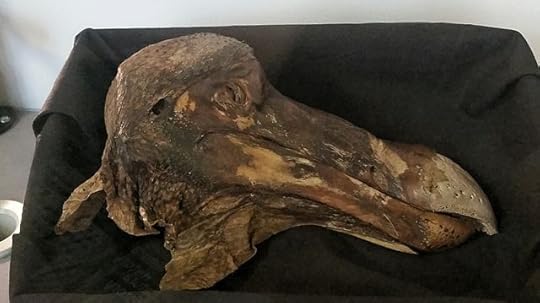Intriguing Science with a Great Name #biology #extinction
It’s a great concept with a great name: resurrection biology. No one will bring back extinct species, not exactly. Related species can be adapted to reoccupy, and perhaps recreate, their ecological niches.
Resurrection biology seeks to de-extinct animals and plants that have been lost, a bit like the fictional dinosaurs in Jurassic Park, by using ancient DNA and related living species.
Biotechnology and genetic engineering startup Colossal Biosciences announced in January that it wants to bring back the dodo — an odd-looking flightless bird that lived on the island of Mauritius in the Indian Ocean until the late 17th century — and reintroduce it to its once native habitat. CNN
More recently-lost animals may be reclaimed: woolly mammoth, Tasmanian tiger, and passenger pigeons. The goal, re-wilding, wouldn’t be to simply give us oddities for entertainment, but to develop animal populations capable of remaking ecosystems. This is geo-engineering for environments in decline to benefit humans as well as wildlife.
As for the dodo, DNA exists in museum specimens. Nothing was intentionally preserved for a genetics project, but enough samples may have survived to make a new dodo possible.
 Nicobar pigeon, possible contributor to a new dodo. Due to hunting and habitat loss, it is a near-threatened species.
Nicobar pigeon, possible contributor to a new dodo. Due to hunting and habitat loss, it is a near-threatened species.The company plans to compare the genomes of the dodo and the Rodrigues solitaire, an extinct bird closely related to the dodo, to identify how they differ. Then it will edit PGCs [certain stem cells] of a Nicobar pigeon so it expresses the physical traits of a dodo.
The edited cells will then be inserted into the embryos of a sterile chicken and rooster. With the introduction of the edited PGCs, the chicken and rooster will be capable of reproducing, and, in theory, their offspring will resemble the dodo thanks to the hybridized pigeon DNA in their reproductive systems. CNN
This won’t be a dodo, but placed in an environment similar to the originals, it will hopefully figure out how to live like a dodo. Over time, maybe evolve into what a dodo would become if it had adapted to the modern world. Genetics may be the easy part.
 Museum specimen of a dodo
Museum specimen of a dodoThe task seems even harder for socially complex animals. A reconstructed woolly mammoth baby will have none of the species’ original culture. If elephants are used in the project, someone will have to decide if experimenting on them is ethical. And, to recreate a Pleistocene grassland for a mammoth herd to live on will require a vast area set aside as a wilderness or preserve. More than one charismatic species will be needed on the landscape. The science may progress faster than the politics of such a venture.
Whatever the gee-whiz excitement of resurrection biology, there’s a reasonable argument to be made that saving the plants and animals that still exist is a better use of resources. The 50th anniversary of the Endangered Species Act reminds us that, despite all the complications, that can be done. But human sensibilities must be considered, and public support found. Gee-whiz could be the key.



